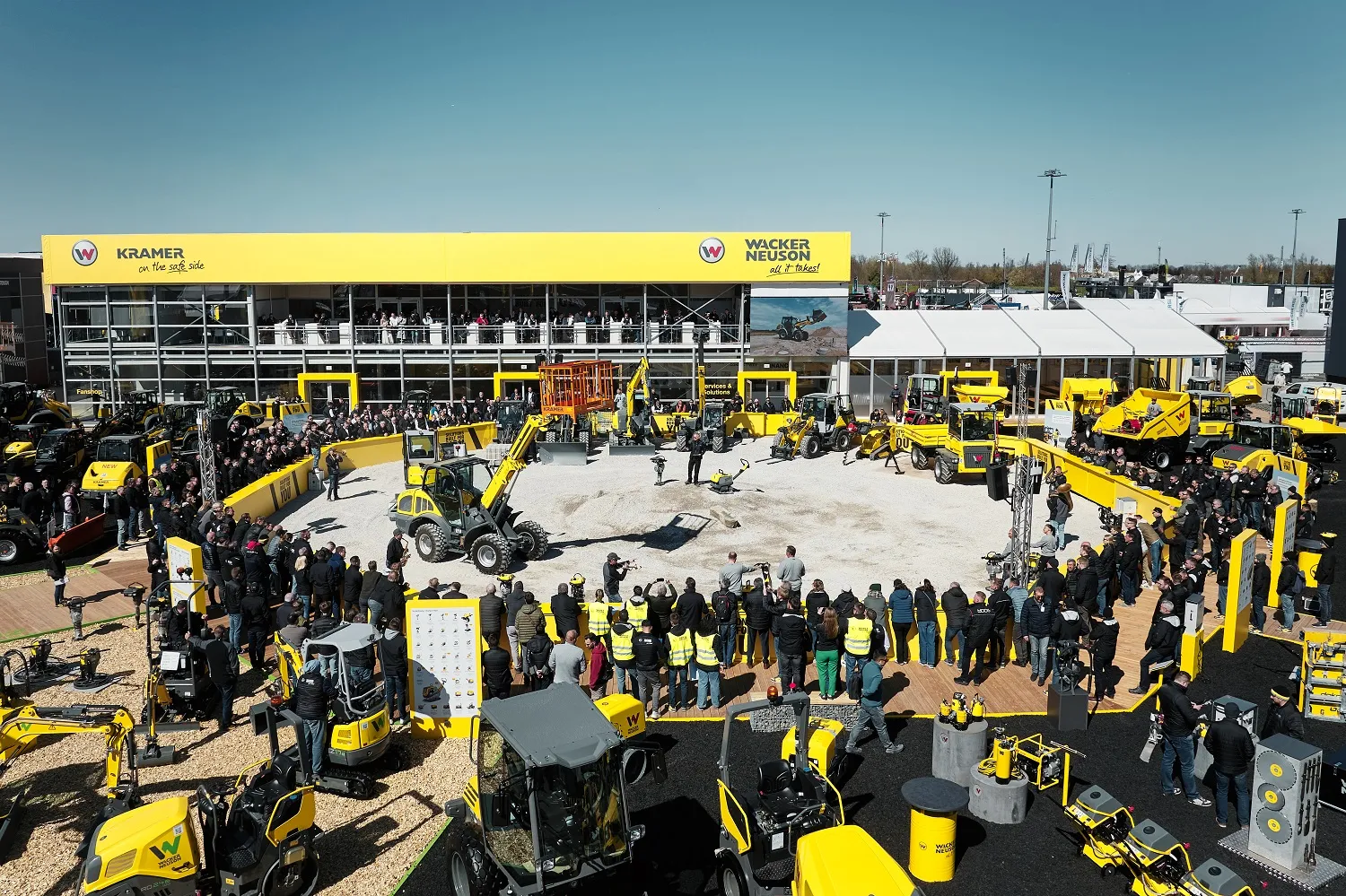Construction firm STRABAG says that its performance in the 2015 financial year was ‘satisfactory’ and that its outlook for 2016 is positive. “We closed an overall satisfactory year in 2015 with a higher output volume on nearly unchanged employee levels and a lower order backlog. In 2016 we want to maintain the output volume at its high level and raise our EBIT margin to 3%. Thanks to our improved risk management and cost reductions, we are confident that we will reach this goal after having also succeeded i
February 22, 2016
Read time: 4 mins
Construction firm 945 STRABAG says that its performance in the 2015 financial year was ‘satisfactory’ and that its outlook for 2016 is positive. “We closed an overall satisfactory year in 2015 with a higher output volume on nearly unchanged employee levels and a lower order backlog. In 2016 we want to maintain the output volume at its high level and raise our EBIT margin to 3%. Thanks to our improved risk management and cost reductions, we are confident that we will reach this goal after having also succeeded in constantly improving the earnings in the past years”, said Thomas Birtel, STRABAG’s CEO.
STRABAG generated an output volume of €14.3 billion in the 2015 financial year, a growth of 5 % over the previous year. Slovakia stood out with high gains, although market conditions in the Czech Republic and Poland also made for positive growth in those countries. In Germany, the higher output volume was largely a result of the acquisition of facility management company DIW Group in late 2014.
The order backlog decreased in 2015, a situation which already became apparent over the course of the year. At year’s end, this figure stood at €13.1 billion, 9% below the level of 31 December 2014. This development is mostly due to the completion of large projects in Hungary, Italy and Slovakia, but also because of the adverse economic conditions in Russia and neighbouring countries.
Despite the integration of several thousand employees of Germany- and Austria-based DIW Group, the number of employees grew only marginally (+1 %) to 73,315. Quite variable trends were observed on the other markets. In the Americas, for example, the company took on more than 1,000 additional employees, while employee levels in Africa fell by a similar figure.
The management of STRABAG expects the output volume to remain about the same at approximately €14.3 billion in the 2016 financial year. This will likely be composed of €6.4 billion from the North + West segment, €4.4 billion from the South + East segment and €3.3 billion from the International + Special Divisions segment. The remainder can be allotted to the segment designated as “Other”. The company expects the output contributions from the individual segments to remain nearly stable. Organic growth at about the level of inflation is expected for the years to come.
STRABAG had previously issued a target of achieving a lasting EBIT margin (EBIT/revenue) of 3% starting in 2016. As the efforts to further improve the risk management and to lower costs have already had a positive impact on earnings, the company confirms this target. In 2014 the margin had amounted to 2.3%. For 2015 the STRABAG SE Management Board continues to expect an EBIT of at least €300 million, corresponding to a margin between 2.3% and 3%. These and further figures for the 2015 financial year will be published on 29th April 2016 at 7:30am.
The earnings expectations are based on the assumption of solid demand in the German building construction and civil engineering market. At the same time, the company is hoping for the first additional investments by the public sector in transportation infrastructures in this home market. Very positive contributions to the earnings continue to be expected especially from Poland, the property and facility management entities, the real estate and the infrastructure development business, and building construction in Austria.
The international business, by contrast, is weaker as the low oil price has led to a considerable decline in demand in the group’s traditional non-European markets. As expected, while the construction materials business has managed the turnaround, there has been no such development in Switzerland or in hydraulic engineering so far. The price pressure is expected to remain strong in the countries of Central and Eastern Europe, although, for example, work is continuing successfully in Slovakia on several larger infrastructure projects.
The cash flow from investing activities, without considering acquisitions, will likely reach €400 million in 2016 after an estimated €350 million in 2015.
STRABAG generated an output volume of €14.3 billion in the 2015 financial year, a growth of 5 % over the previous year. Slovakia stood out with high gains, although market conditions in the Czech Republic and Poland also made for positive growth in those countries. In Germany, the higher output volume was largely a result of the acquisition of facility management company DIW Group in late 2014.
The order backlog decreased in 2015, a situation which already became apparent over the course of the year. At year’s end, this figure stood at €13.1 billion, 9% below the level of 31 December 2014. This development is mostly due to the completion of large projects in Hungary, Italy and Slovakia, but also because of the adverse economic conditions in Russia and neighbouring countries.
Despite the integration of several thousand employees of Germany- and Austria-based DIW Group, the number of employees grew only marginally (+1 %) to 73,315. Quite variable trends were observed on the other markets. In the Americas, for example, the company took on more than 1,000 additional employees, while employee levels in Africa fell by a similar figure.
The management of STRABAG expects the output volume to remain about the same at approximately €14.3 billion in the 2016 financial year. This will likely be composed of €6.4 billion from the North + West segment, €4.4 billion from the South + East segment and €3.3 billion from the International + Special Divisions segment. The remainder can be allotted to the segment designated as “Other”. The company expects the output contributions from the individual segments to remain nearly stable. Organic growth at about the level of inflation is expected for the years to come.
STRABAG had previously issued a target of achieving a lasting EBIT margin (EBIT/revenue) of 3% starting in 2016. As the efforts to further improve the risk management and to lower costs have already had a positive impact on earnings, the company confirms this target. In 2014 the margin had amounted to 2.3%. For 2015 the STRABAG SE Management Board continues to expect an EBIT of at least €300 million, corresponding to a margin between 2.3% and 3%. These and further figures for the 2015 financial year will be published on 29th April 2016 at 7:30am.
The earnings expectations are based on the assumption of solid demand in the German building construction and civil engineering market. At the same time, the company is hoping for the first additional investments by the public sector in transportation infrastructures in this home market. Very positive contributions to the earnings continue to be expected especially from Poland, the property and facility management entities, the real estate and the infrastructure development business, and building construction in Austria.
The international business, by contrast, is weaker as the low oil price has led to a considerable decline in demand in the group’s traditional non-European markets. As expected, while the construction materials business has managed the turnaround, there has been no such development in Switzerland or in hydraulic engineering so far. The price pressure is expected to remain strong in the countries of Central and Eastern Europe, although, for example, work is continuing successfully in Slovakia on several larger infrastructure projects.
The cash flow from investing activities, without considering acquisitions, will likely reach €400 million in 2016 after an estimated €350 million in 2015.







